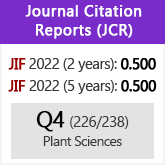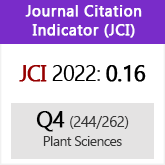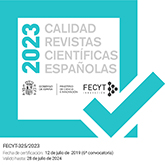Recognition of Croton moschatus (Euphorbiaceae) for the nomenclature of Cuban plants
DOI:
https://doi.org/10.3989/ajbm.2580Keywords:
Croton section Adenophylli, ethnobotany, Flora of Cuba, history of botany, nomenclature, typificationAbstract
The previously overlooked name Croton moschatus Monteverde & P.Betancourt is here recognized for a Cuban endemic species on the basis that it was validly published and has priority over the heterotypic synonyms C. claraensis Urb. and C. sagranus Müll.Arg. In this work, a neotype for the name C. moschatus is designated and lectotypes are designated for C. claraensis and C. stenophyllus Griseb. var. rosmarinifolius Müll.Arg. We also comment on the confusion surrounding the uses of C. moschatus and other relevant historical aspects.
Downloads
References
Acevedo-Rodríguez P. & Strong M. 2012. Catalogue of seed plants of theWest Indies. Smithsonian Contributions to Botany. Nº 98. Smithsonian Institution Schorlaly Press, Washington D.C. https://doi.org/10.5479/si.0081024X.98.1
Alain [hno.] 1953. Flora de Cuba III. Contribuciones Ocasionales del Museo de Historia Natural del Colegio "De La Salle" 13: 1-472.
Biral L., Simmons M.P., Smidt E.C., Tembrock L.R., Bolson M., Archer R.H. & Lombardi J.A. 2017. Systematics of New World Maytenus (Celastraceae) and a New Delimitation of the Genus. Systematic Botany 42: 680-693. https://doi.org/10.1600/036364417X696456
Borhidi A. & Muñiz O. 1977. Revisión del género Croton L. (Euphorbiaceae) en Cuba. Annales Historico-naturales Musei Nationalis Hungarici 69 (1-4): 41-53.
Carabia J.P. 1942. El género Croton en Cuba. The Caribbean Forester 3 (3): 114-135.
Gómez de la Maza M. 1889. Ensayo de Farmacofitología cubana. La Propaganda Literaria, La Habana. https://doi.org/10.5962/bhl.title.4438
Govaerts R., Frodin D.G. & Radcliffe-Smith A. 2000. World checklist and bibliography of Euphorbiaceae, 4 vols. Royal Botanic Garden, Kew, UK.
Govaerts R., Fernández Casas F.J., Barker C., Carter S., Davies S., Esser H.J., Gilbert M., Hoffmann P., Radcliffe-Smith A., Steinman V., Welzen P. van & Whitmoore T. 2020. World Checklist of Euphorbiaceae. Facilitated by the Royal Botanic Gardens, Kew. Página web: https://wcsp.science.kew.org/compilersReviewers.do [consultada 24 junio 2020].
Greuter W. & Rankin R. 2017. Espermatófitos de Cuba; inventario preliminar. Botanischer Garten und Botanisches Museum Berlin. Parte II: Inventario. Botanischer Garten und Botanisches Museum Berlin-Dahlem. Zentraleinrichtung der Freien Universität Berlin, Berlin.
Grisebach A. 1860. Plantae Wrightianae e Cuba orientali (Polypetalae et Apetalae). Memoirs of the American Academy of Arts and Sciences, ser. 2, 8: 153-192. https://doi.org/10.2307/25057968
IPNI. International Plant Names Index. Checklist dataset. Página web: https://www.ipni.org [consultada: 15 mayo 2020].
Méndez I. & Puig M. 1997. Manuel de Monteverde; botánico y naturalista. Moscosoa 9: 154-161.
Méndez I. 2008. Manuel de Monteverde y Bello; precursor en los estudios ambientales y pionero de la educación ambiental. Monteverdia I: 10-18. Página web: https://revistas.reduc.edu.cu/index.php/monteverdia/article/view/1748 [consultada: 25 mayo 2020].
Méndez I. 2017. Manuel de Monteverde y Bello; relevante intelectual en el Camagüey del siglo XIX. Cuadernos de Historia Principeña 16: 11-52.
Müller Argoviensis J. 1865. Euphorbiaceae, in Linnaea 34: 1-224.
Müller Argoviensis J. 1866. Euphorbiaceae. En: De Candolle A.P., Prodromus Systematis Naturalis Regni Vegetabilis 15(2): 1-1286. Paris, Strasbourg, & London.
Richard A. 1845. Fanerogamia. En de la Sagra, R. (ed.), Historia física, política y natural de la Isla de Cuba - 11. Librería de Arthus Bertrand, París.
Rodríguez Ferrer M. 1862. De gusto no se ha escrito, ó la nueva planta de la moschata. Irurac Bat Año XI, No 212 (19 septiembre), p. 2-3. https://liburutegibiltegi.bizkaia.eus/handle/20.500.11938/82160
Rodríguez Ferrer M. 1865. De gusto no se ha escrito, ó la nueva planta de la moschata. Revista de España XLII: 358-362.
Rodríguez Ferrer M. 1876. Naturaleza y Civilización de la Grandiosa Isla de Cuba. Madrid, Imprenta Dr. Jacinto Noguera, Naturaleza, Primera Parte.
Roig J.T. 1974. Plantas medicinales, aromáticas o venenosas de Cuba. Ciencia y Técnica, La Habana.
Stafleu F.A. & Cowan R.S. 1981. Taxomomic literature III. Regnum Vegetabile 105: 1-550.
Thiers B. 2020. Index herbariorum: a global directory of public herbaria and associated staff. New York Botanical Garden's virtual herbarium. Página web: http://sweetgum.nybg.org/science/ih/ [consultado mayo 2020].
Tropicos.org. Missouri Botanical Garden. Página web: http://www. tropicos.org [consultada: 18 julio 2020].
Turland N.J., Wiersema J.H., Barrie F.R., Greuter W., Hawksworth D.L., Herendeen P.S., Knapp S., Kusber W-H., Li D-Z., Marhol K., May T.W., McNeill J., Monro A.M., Prado J., Price M.J. Smith G.F. (eds.). 2018. International Code of Nomenclature for algae, fungi, and plants (Shenzhen Code). Regnum Vegetabile 159. https://doi.org/10.12705/Code.2018
Urban I. 1919. Sertum antillanum-7. In Repertorium Specierum Novarum Regni Vegetabilis 15: 397-415. https://doi.org/10.1002/fedr.4870152505
Van Ee B.W., Riina R. & Berry P.E. 2011. A revised infrageneric classification and molecular phylogeny of New World Croton (Euphorbiaceae). Taxon 60: 791-823. https://doi.org/10.1002/tax.603013
Published
How to Cite
Issue
Section
License
Copyright (c) 2021 Consejo Superior de Investigaciones Científicas (CSIC)

This work is licensed under a Creative Commons Attribution 4.0 International License.
© CSIC. Manuscripts published in both the printed and online versions of this Journal are the property of Consejo Superior de Investigaciones Científicas, and quoting this source is a requirement for any partial or full reproduction.All contents of this electronic edition, except where otherwise noted, are distributed under a “Creative Commons Attribution 4.0 International” (CC BY 4.0) License. You may read here the basic information and the legal text of the license. The indication of the CC BY 4.0 License must be expressly stated in this way when necessary.
Self-archiving in repositories, personal webpages or similar, of any version other than the published by the Editor, is not allowed.

















